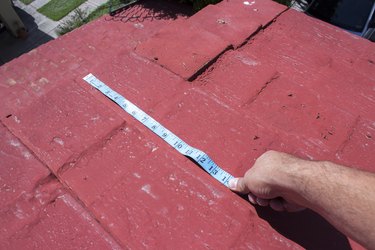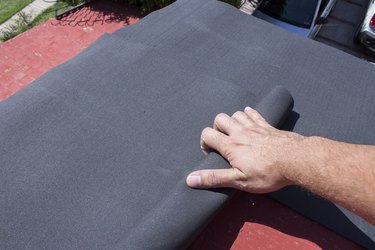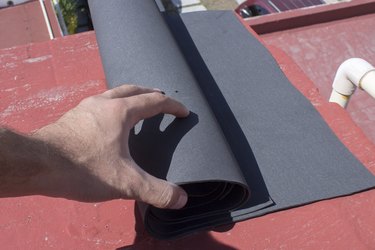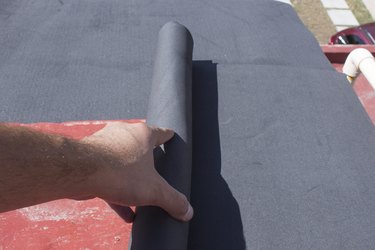Things You'll Need
Tar paper (also known as roofing felt)
Cutting blade
Hammer tacker, electric staple gun or galvanized nails

Water is an enemy to your home. Rain, snow, hail and sleet pound your roof year after year, getting in between the shingles and soaking into the wood structure. Your first barrier against water is a good roof covering. To protect your home, install a protective layer of tar paper--also called roofing felt--before placing tile, metal, slate or wood shingles. If you're using an ice or water shield, place this first, and then install the tar paper.
Step 1

Measure your roof's surface in square feet and purchase enough tar paper to cover the entire surface twice.
Video of the Day
Step 2

Begin at the bottom edges of the roof and go up. Lay the first strip of tar paper side to side, with its bottom edge along the edge of the roof. Tack it down with galvanized nails, a hammer tacker or an electric staple gun. Place just enough tacks to hold down the tar paper; use more if the day is windy.
Step 3

Lay the next strip of tar paper farther toward the top of the roof. Make sure the bottom edge of the second sheet overlaps the top edge of the first sheet by about five inches. Continue until you are near the top of the roof.
Step 4

Repeat steps 2 and 3 on the other side of the roof, stopping when you are near the peak of the roof. Place a final piece of tar paper over the top of the roof, attaching it so it overlaps the tar paper on both sides of the roof. The idea is to make sure water that falls on the roof drips down from paper to paper and off the roof rather than up under the tar paper, potentially damaging the roof's wooden structure.
Step 5

Repeat steps 2 through 4 with a second layer of tar paper, for maximum coverage. You're now ready to place the shingles. If you want to stop for the day, the tar paper will provide adequate roof protection until the next day when you install the shingles.
Tip
Try not to tear the tar paper as you lay it, because that leaves your roof vulnerable to water damage.
If you run out of a piece of tar paper halfway across a strip you're laying, cut a new piece and overlap the old one by five inches, continuing across the roof.
If your roof contains any vents or flashing, place a small piece of tar paper above each one, overlapping the top edge of the vent to prevent water from running down and into the roof around the opening.
Video of the Day